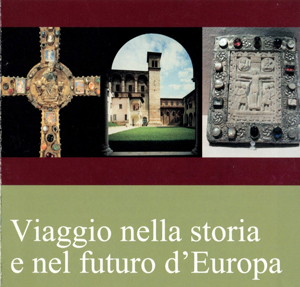Hidden soul of Europe
The Route, whose environmental, archaeological, artistic and monumental characteristics are very charming, offers the opportunity to make a new journey of knowledge across the elements that gave birth to European culture, some of which are hidden, yet still living as forms and expressions of local traditions and religious cults. Furthermore, the Route offers the opportunity to share knowledge on the original sources of the main values of our culture.
During their Völkerwanderung, the Longobards – catalysts and vehicle of the lines of culture that they met and assimilated – came repeatedly into contact with other populations, adopting their uses and customs, which they enriched with their own traditions, and giving rise to a strong system of cultural integration. This was a characteristic of many peoples of that time, but only the Longobards succeeded in developing it throughout the entire cycle of their historic parabola.


It is also thanks to this singular privilege that today the Longobard heritage can be considered the heritage of so many peoples of present-day Europe: not only because of their epic journey or their settlement in the various territories; but above all for their cultural, religious and artistic bequests and, more or less directly, for the influence of the historic Longobard presence on the determination of new equilibriums among the great powers of the early middle ages - marked by the rise of Catholicism and of the Papacy in Rome and by the birth of the Holy Roman Empire - which, after the end of Longobard power, characterize the next thousand years of European history.
Lastly, the Route “Longobard Ways across Europe” offers the opportunity to use its historical and cultural sources as a starting point to reinterpret our history, which is marked by cyclical migration-integration processes that, over the centuries, made Europe a meeting point and melting pot of different cultures and traditions.
These values, which are an extraordinary factor of aggregation for civilisations and traditions, are partly concealed, partly visible in the Longobard heritage and reflect the complexity of a common history of these people in Europe.
The extraordinary nature of Longobard culture - which for so long has been forgotten by everyone or at least underestimated - is finally accentuated, from the artistic and monumental point of view, by the exceptional features of the assets presented on the serial site “The Longobards in Italy. The centres of power (568-774 AD)”, included by UNESCO (2011) in the World Heritage List.
News
-
2025 21 MarchERRATA CORRIGE CONVEGNO DONNE LONGOBARDE
-
2025 19 March
-
2025 19 MarchDa Salerno a Monza: convegni nel nome delle mulieres longobarde
